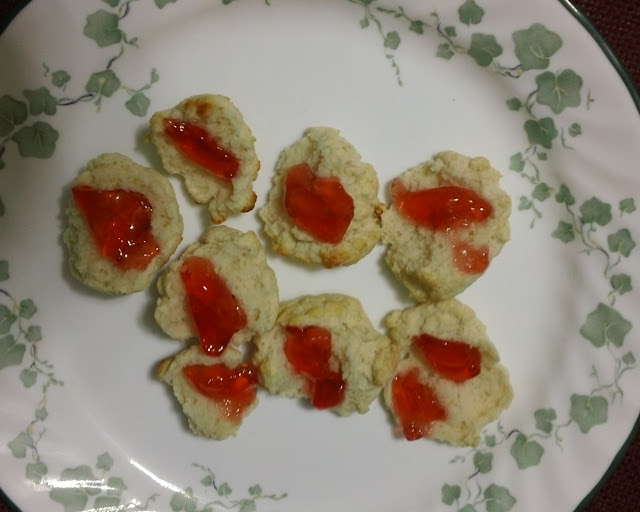1976. The American Bicentennial. Patriotic Fervor.
Americans showed their patriotism by painting almost everything, including fire plugs, red, white and blue. The celebrations went on all year, peaked around the 4th of July and had waned by Thanksgiving.
At the Kansas State Fair, held annually in September at Hutchinson, an exhibit was set aside for pioneer themes. Statehood was achieved in 1861. I remember a lot of red, white and blue in quilts, art, cakes and even layered jars of jelly. Then I saw something I had never heard of:
CORN COB JELLY
� They're kidding, right?
Thank you, kind anonymous source for providing the ingredients with the display. I stood at the exhibit and jotted the recipe on the back of a book of checks.
Since we raised corn on our farm, harvest was at hand, I had plenty of jars, and the only other ingredients were sugar and pectin, I decided to try it.
In 1876 I expect folks burned corn cobs in the cook stove or heating stove. By 1976 they were nothing more than harvest residue. Between hauling truck loads of corn from the field to the elevator, I gathered nice looking ears, meaning they didn't have any bug damage, and hand shelled them. No scavenging harvested cobs off the ground for me.
This was the easiest, most fail-proof recipe I ever tried.
12 bright red cobs with the husks and corn kernels removed
6 pints water
*1 package powdered pectin (Don't use liquid pectin.)
3 cups white, granulated sugar
**Red food coloring
Break the cobs into small pieces and boil for 40 minutes in a large kettle. I put an old plate over the top of the cobs to keep them in the water as they tend to float. While the cobs are boiling, prepare your jars and lids. At the end of the 40 minutes, strain the water through cheesecloth and save 3 cups of liquid in a three-quart pan. You need one at least that big to allow for expansion while the jelly boils. Dispose of the cobs and remaining water.
WARNING: Never turn your back on jelly. It will boil over. Stir continuously with a whisk.
Add the pectin to the retained liquid and bring to a roiling boil.
Add the sugar and boil two or three minutes until completely dissolved.
Remove from heat.
For esthetic reasons only, add a couple of drops of red food coloring and stir to incorporate.

This recipe foams. (It has air bubbles trapped in the upper surface.) Skim the foam off with a large spoon until you have clear jelly. Pour into half-pint jars and seal using recommended canning procedures.
Make some toast, spread the foamy jelly on it, and eat!

Corn Cob Jelly probably doesn't taste like anything you ever ate before. The flavor is hard to describe. I think it resembles pear jelly a little bit. It is not as good as grape or strawberry, but we think it tastes wonderful on fresh, homemade biscuits. The pioneers had a good idea.
As a gift, it is a great conversation starter.
*NOTE: Powdered pectin has been around since the 1910's. Therefore the recipe is not the one used during the EARLY pioneer days. Other natural sources for making juice gel might have been used.
** If you want an all-natural product, omit the red food color. The finished jelly will be a mild amber color, depending on how dark the corn cobs were.
No comments:
Post a Comment